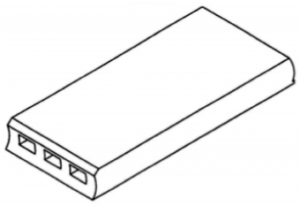Designs are a major factor of whether a product will satisfy consumer needs for personalization. A striking design can play a key role in expanding market share of a product which has relatively minor functional differences from its competitors. Designs are also easier to imitate than the functional or structural features of a product, which is why an increasing number of designers and market players have begun to focus on application of design patents.
While infringement disputes over design patents have increased in recent years, there has been a tangible downward trend of direct copying of designs. Distinguishing between the various types of “possible infringement” has become a focal point of investigations into design infringement – as well as one of its difficulties.
There are a number of opinions on how this can be addressed, but available cases can provide industry practitioners with needed guidance on how to determine design infringement.
It can be argued that, except for certain original designs, designs are for the most part variations on the form, pattern or colour of existing designs. Disputes can quickly arise when existing designs are altered by adding or subtracting some elements of the design, or substituting some part of a design with a unique feature.
This column will consider only the design variations involving the addition of an extraneous design feature to the form, pattern or colour of a design.

Jiang Fengtao
恒都律师事务所
管理合伙人
Managing Partner
Hengdu Law Offices
Addition of pattern or colour elements. In a 2013 infringement case concerning a scissors design, the Supreme People’s Court held: “While the alleged infringing product uses a design that is identical or similar to the design patent, it adds other design elements in patterns and colours. These added design elements generally do not materially affect the determination of infringement if they fall within the scope of extraneously added design elements. Were this not the
case, a third party could readily circumvent patent infringement by merely adding, e.g., patterns or colours, to a design patent.”
The scope of the patent protection in this case was the form, the external outline of the scissors, and the pattern, dark and light-coloured concentric rings on the handles of the scissors. The alleged infringing scissors added a pattern and colours to the scissors’ blades. One can gather from the SPC’s ruling that the simple addition of a pattern or colour element to an existing design does not substantively affect the determination of infringement.

Ding Sha
恒都律师事务所
律师
Associate
Hengdu Law Offices
In a 2014 infringement case concerning a tin for holding food, there was an added design element on the body of the alleged infringing tin. The SPC held that the scope of the patent protection in question was a form design only, excluding the pattern element. It also held that the form of the body of the alleged infringing tin was similar to the form of the body of the tin in the patent in question.
The SPC ruled that the alleged infringing tin design fell within the scope of protection of the patented design, and therefore had infringed the patent. The alleged infringing could also be deemed to have added a pattern element to the patented design, which would again lead to the same judgment.

Addition of form elements. In a 2012 design case concerning a heat storage board (figure 1), the SPC held: “There are three shallow channels on the surface of one side of the cuboid figure of the alleged infringing design. The channels are evenly spaced along the short side and run through the entire length of the long side.
The three shallow channels are located on the surface of the product and can be easily observed by the consumer. They run through the entire length of the long side of the cuboid figure and therefore cover a relatively large area of the surface of the product.
“Compared to the surface plane of the patented design, the alleged infringing design’s three shallow channels noticeably affect the overall visual effect of the product. They create a substantive difference in the overall visual effect of the alleged infringing design and the patented design.”
The SPC ultimately found that the heat storage board had not infringed the original patented design. Although the alleged infringing heat storage board added three shallow channels to the patent design in question – an addition of a form element – the noticeable change created a substantive difference between the two products.
Implications. The majority of designs are dependent on the form: Patterns are dependent on the form, and colours themselves are variations on a pattern. The weight given to the design elements in an infringement comparison is thus: form > pattern > colour.
The addition of a form element can significantly affect the overall visual effect compared to an existing design. A finding of infringement is likely when the form design elements are essentially identical, because it is very difficult for an additional pattern or colour element to make a significant effect.
When the difference between an apparently infringing product and a patented product is an added or altered pattern or colour, generally a ruling of infringement is likely. Yet when it is the form that has been altered, a full observation of whether the form makes a noticeable visual effect must be made to determine whether the product is infringement. Competitors need to modify the form of their products to avoid potential infringement risks.
Jiang Fengtao is the managing partner and Ding Sha is an associate of Hengdu Law Offices






















